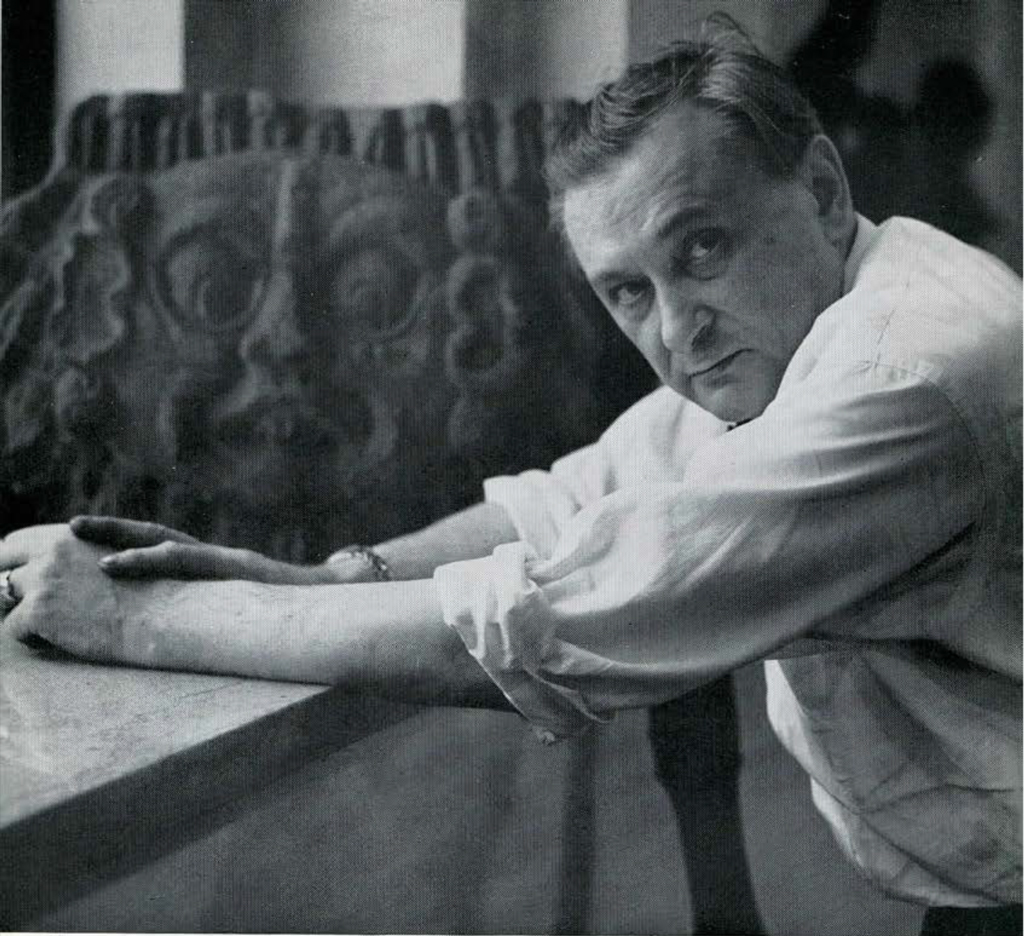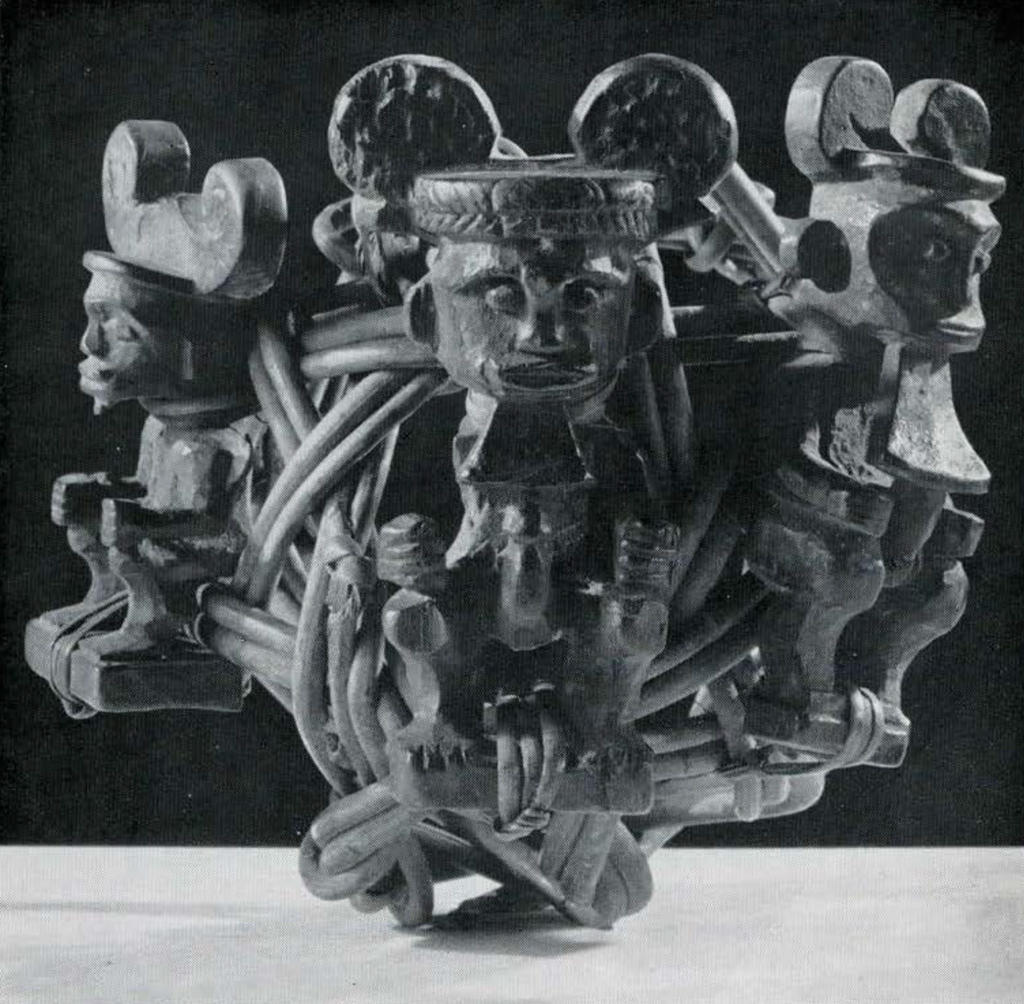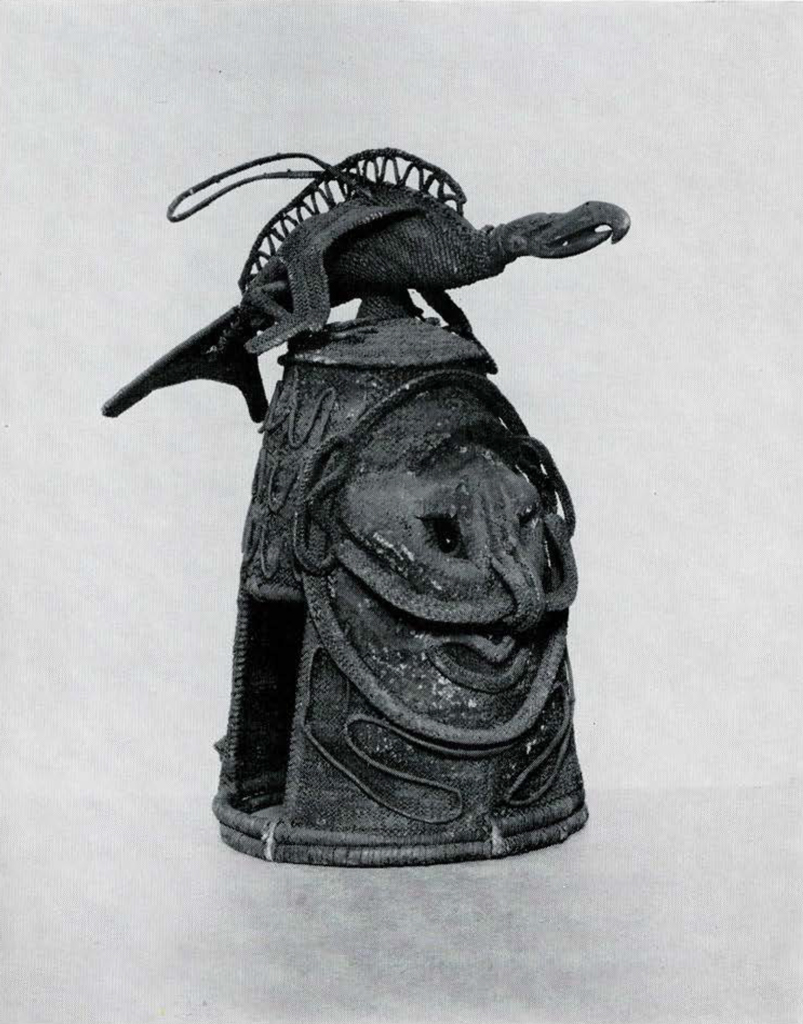
Image Number: 45388
Mr. Lipchitz was asked why he had chosen this Mayan stone relief from Honduras, and he said:
When you asked me to come to the cellars of the University Museum-to find on each shelf some hidden pieces to be exhibited in a special show, I was thrilled because all my hunting instincts were suddenly reawakened.
I like hunting. I like to pick up in the dirt and dust the pearl which will make me dream, which will teach me and which will make me feel the hand-this distinctive sign of human glory. I was astounded to find such a rare piece as the Mayan bas-relief lying on the floor among potteries of no great interest, and I picked it up just as if I had saved a man from drowning.

He selected a rattan cage from Borneo that looks like one of his own sculptures.
Look at this piece.
How light it is and how solid at the same time. How the little stripes are catching marvelously the light and how not only can you feel, but how you can see and be moved by the other side. It is precisely what I was looking for.
As you probably know, I am the sculptor responsible for all the transparent sculpture you see so frequently now; it was not like this when I introduced transparent sculpturing to our modern time. Many people laughed at me, and I had to fight hard to show the tremendous possibilities of this new approach to the volume.
How happy I am not to have found this little Borneo object before I started my transparencies. It would have certainly taken away from me my enthusiasm and my feeling of personal discovery. Now the piece is without any danger for me, just a confirmation.

Image Number: 237
And this Sepik River dance mask, four feet high, and woven of reed and fiber.
What of this New Guinea head?
Made of dirt, of mud, and now it is a real pearl. It could not be more novel material even if it could be made of gold. They have made such a rich work of art, full of expression, from such poor material. This piece shows how a human being dominates the material he uses.
I find this work extraordinary.
It is a marvelous lesson to show how the material part and the technique are of minor importance in the achievement of a work of art.

